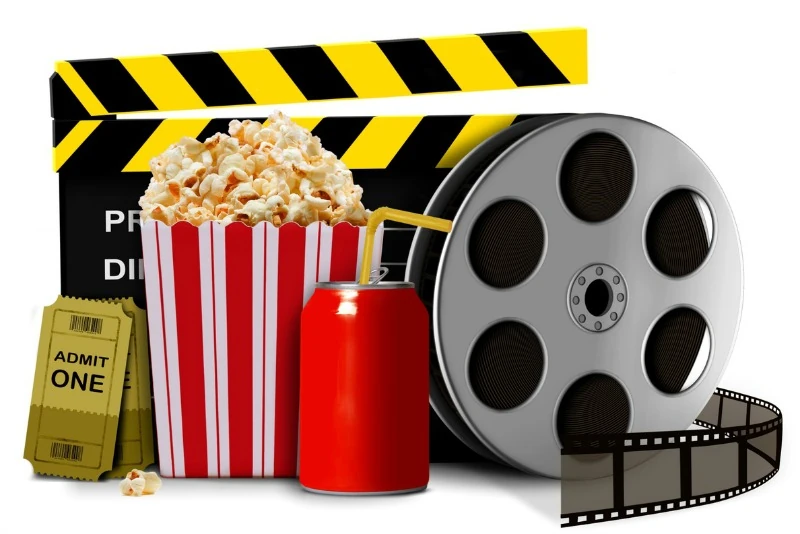Movies have been a major part of our lives for over a century, captivating audiences with stories, emotions, and spectacular visuals. From the early days of silent films to the modern blockbusters, the world of cinema has constantly evolved. In this article, we will explore the remarkable journey of movies and how they have shaped entertainment. Along the way, we’ll highlight the impact of films like It Ends with Us and how platforms like Ask4Movie continue to make movies accessible to all.
The Silent Era: The Birth of Cinema
The history of cinema began in the late 19th century when the first motion pictures were created. These films were silent, relying solely on visual storytelling and title cards to convey dialogue. Iconic filmmakers like Charlie Chaplin and Buster Keaton pioneered the art of silent movies, using physical comedy and expressive acting to entertain audiences. Despite the lack of sound, these films were groundbreaking and laid the foundation for what was to come.
The Talkies: The Introduction of Sound
The arrival of sound in movies during the late 1920s marked a major turning point in cinematic history. The first feature-length “talkie” was The Jazz Singer in 1927, and it was an instant hit. This technological advancement opened up new possibilities for storytelling, allowing filmmakers to incorporate dialogue, music, and sound effects. The movie industry flourished as sound films became the standard, and Hollywood entered its Golden Age with classics like Gone with the Wind and Casablanca.
The Golden Age of Hollywood: Glitz, Glamour, and Stardom
The 1930s and 1940s are often referred to as the Golden Age of Hollywood. This era saw the rise of major film studios like MGM, Warner Bros., and Paramount, which produced many of the timeless films we still love today. Movie stars like Humphrey Bogart, Marilyn Monroe, and James Dean became household names, and genres such as romance, adventure, and film noir captivated audiences worldwide.
This was also the period when movies like It Ends with Us would have found a perfect home in theaters, resonating with viewers through emotionally charged narratives and unforgettable performances.
The Rise of Color and Special Effects
The transition from black-and-white to color films was another groundbreaking moment in cinematic evolution. Early experiments with color began in the 1930s, but it wasn’t until The Wizard of Oz and Gone with the Wind that color became a popular choice for filmmakers. By the 1950s, color films had become the norm, enriching the visual storytelling of movies.
Alongside the shift to color, advancements in special effects began to shape the way stories were told on screen. Movies like King Kong (1933) and 2001: A Space Odyssey (1968) showcased the potential of visual effects to create new worlds and experiences.
The New Hollywood Era: Creativity Takes Over
In the 1960s and 1970s, a new wave of filmmakers emerged, known as the “New Hollywood” era. Directors like Martin Scorsese, Francis Ford Coppola, and Steven Spielberg challenged traditional filmmaking norms and brought fresh perspectives to the screen. This era gave birth to some of the most iconic films in history, including The Godfather, Jaws, and Star Wars.
The New Hollywood period was defined by bold storytelling, creative risks, and films that resonated deeply with audiences. It paved the way for modern filmmaking and opened doors for more personal, emotional stories like It Ends with Us, which reflects the complexities of relationships and human experience.
The Digital Revolution: The Age of Blockbusters
The late 20th century and early 21st century saw the rise of digital filmmaking and the creation of massive blockbusters. The introduction of CGI (computer-generated imagery) changed the landscape of movies forever. Films like Jurassic Park (1993) and The Matrix (1999) demonstrated the power of digital effects to bring imaginative stories to life.
Today, many films rely heavily on digital technology for special effects, sound, and even distribution. Streaming platforms, such as Ask4Movie, have made it easier than ever for people to access films from the comfort of their homes. These platforms allow viewers to enjoy a variety of films, including modern dramas like It Ends with Us, which explore contemporary themes and resonate with global audiences.
The Modern Era: Diversity and Streaming Dominate
The current era of cinema is defined by diversity in storytelling and the growing dominance of streaming platforms. Films now explore a wide range of voices, cultures, and perspectives, giving rise to global hits across various genres. The streaming era has also transformed the way people watch movies, with platforms like Netflix, Disney+, and Ask4Movie offering immediate access to thousands of films from different eras and countries.
Movies like It Ends with Us have found success in this modern landscape by connecting deeply with audiences through emotional storytelling and relatable themes. Streaming services make such films available to millions, allowing viewers to experience them at their own pace.
Conclusion: The Future of Cinema
As we look back on the evolution of movies, it’s clear that cinema has always been a dynamic and transformative medium. From the silent films of the early 20th century to the modern blockbusters and streaming hits of today, movies have constantly adapted to new technologies and audience preferences. Whether it’s an emotionally charged drama like It Ends with Us or a high-octane action film, cinema continues to captivate us, making it an integral part of our culture and entertainment.
And as platforms like Ask4Movie continue to provide instant access to these cinematic experiences, the future of movies looks brighter than ever.
